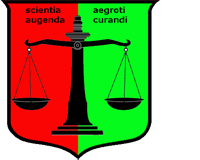Professor Dr. med. Christian ScharfetterDept. of Psychiatry, Psychotherapy & PsychosomaticsPsychiatric Hospital, University of Zurich |

|


|
Zurich Study of Nuclear FamiliesBased on data from 71 multiplex nuclear families (527 subjects) ascertained through an index case with a diagnosis of bipolar illness (n=53) or schizophrenia (n=18) we have addressed the question of diagnosis-independent susceptibility to functional psychoses. Of these subjects, 469 were genotyped for 553 polymorphisms of a genome scan along with 48 candidate genes which have been hypothesized to be involved in psychotropic drug response and to lie in genomic regions harboring vulnerability loci for functional psychoses. Multipoint Linkage AnalysisOur search for vulnerability loci included standard multipoint linkage analysis (Allegro) along with the multivariate genetic vector space method, which allows one to detect oligogenic configurations of genomic loci and their non-linear interactions. Linkage analyses, carried out separately for the two populations of families ascertained through an index case with a diagnosis of bipolar illness and schizophrenia, yielded several genomic regions on chromosomes 1,4,5,6,11 and 22 with striking similarities between NPL-scores. Important here is the approximate parallelity of the curve characteristics rather than the absolute size of the scores (Figure). Overlap Between Genomic RegionsMost interestingly, there was some overlap between genomic regions identified as being linked to vulnerability to functional psychoses and those identified through our study on psychotropic drug response. Multivariate analyses searching for oligogenic configurations of genomic loci that explain a major proportion of observed phenotypic variance are currently being carried out. First results indicate contributions of those genomic loci that were previously identified through our investigation into ethnicity-independent vulnerability to functional psychoses. References
Stassen HH, Begleiter H, Porjesz B, Rice J, Scharfetter C, Reich T: Structural decomposition of
genetic diversity in families with alcohol dependence. Genetic Analysis Workshop 11: Analysis
of genetic and environmental factors in common diseases. Genetic Epidemiology 1999; 17:
325-330
Stassen HH and Scharfetter C: Integration of genetic maps by polynomial transformations.
Am J Med Genetics B 2000; 96: 108-113
Stassen HH, Bridler R, Hägele S, Hergersberg M, Mehmann B, Schinzel A, Weisbrod M, Scharfetter C:
Schizophrenia and smoking: evidence for a common neurobiological basis?
Am J Med Genetics B 2000; 96: 173-177
Hoffmann K, Stassen HH, Reis A: Genkartierung in Isolatpopulationen. Medizinische Genetik 2000;
12,4: 428-437
Stassen HH, Scharfetter C: Oligogenic approaches to the predisposition of asthma in ethnically
diverse populations. Genetic Analysis Workshop 12: Analysis of genetic and environmental factors
in common diseases. Genetic Epidemiology 2001; 21(1): 284-289
Stassen HH, Hoffmann K, Scharfetter C: Similarity by state/descent and genetic vector spaces:
Analysis of a longitudinal family study. Genetic Analysis Workshop 13: Analysis of longitudinal
family data for complex diseases and related risk factors. BMC Genet 2003; 4, S59: 1-6
Stassen HH, Bridler R, Hell D, Weisbrod M, Scharfetter C: Ethnicity-independent genetic basis
of functional psychoses. A Genotype-to-phenotype approach. Am J Med Genetics B 2004; 124:
101-112
Berger M, Stassen HH, Köhler K, Krane V, Mönks D, Wanner C, Hoffmann K, Hoffmann MM, Zimmer M,
Bickeböller H, Lindner TH: Hidden population substructures in an apparently homogeneous
population bias association studies. Eur J Hum Genetics 2006; 14: 236-244
Stassen HH, Szegedi A, Scharfetter C: Modeling Activation of Inflammatory Response System.
A Molecular-Genetic Neural Network Analysis. BMC Proceedings 2007, 1 (Suppl 1): S61, 1-6
Stassen HH, Hoffmann K, Scharfetter C: The Difficulties of Reproducing Conventionally Derived
Results through 500k-Chip Technology. BMC Genet Proc. 2009; 3 Suppl 7: S66
|
|

Approximately parallel NPL score characteristics for multiplex nuclear families ascertained through an index-case with a diagnosis of bipolar illness (green) or schizophrenia (red) indicate shared vulnerability among functional psychoses.
Please note: important here is not the absolute size of the locus contributions
when comparing the 2 populations ascertained through index cases with either a diagnosis of
"schizophrenia" or "bipolar disorder", but the fact that the signals are showing up at the
same genomic locations.
|
|
| [ Mail to Webmaster ] k454910@ifrg.ch |